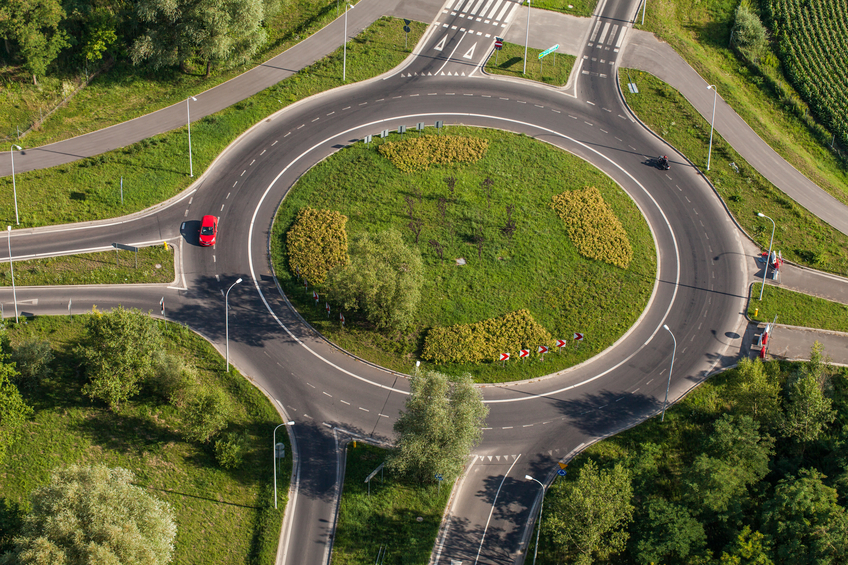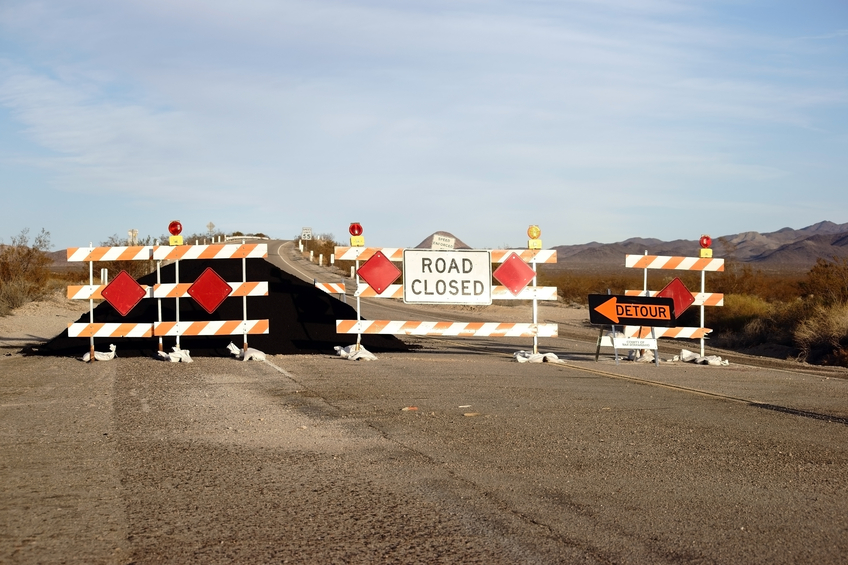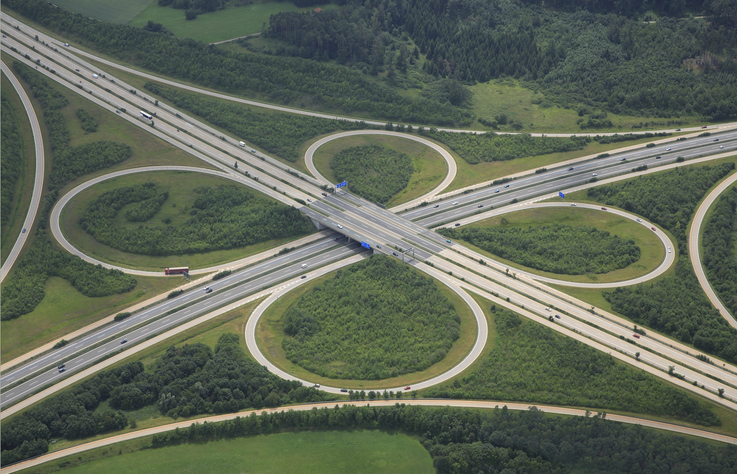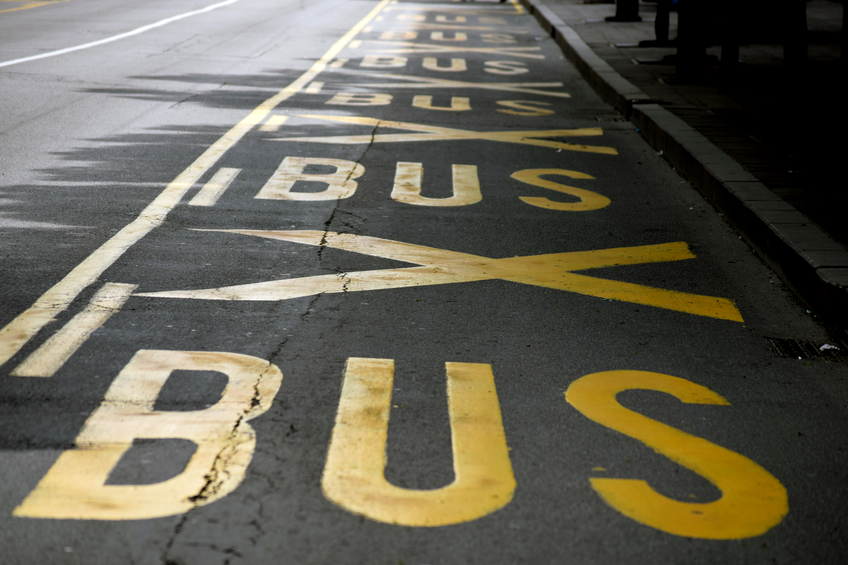Ohio Transportation and Ethics 30 PDH Discount Package 3
Traffic Bottlenecks Operational Improvements (C06-018)
Minimum Retroreflectivity Levels for Blue and Brown Traffic Signs (C04-046)
Improved Urban Freight Mobility and Delivery (C07-020)
Road Diet Informational Guide (C04-061)
General Principles of Engineering Ethics (LE2-016)

This online engineering PDH course provides information on roundabout at the planning, design, construction, operations and maintenance levels. It also includes the procedures considered for selecting and assessing the appropriateness of a roundabout.
A modern roundabout is one of the three types of circular intersections. However, roundabouts have demonstrated substantial safety and operational performance over other forms of intersection control. This course focuses on two categories of roundabouts: single-lane and multilane roundabouts. It is intended to ensure consistency across the State in the implementation of roundabouts at new installations and to provide safe and efficient traffic operations in the case of retrofit/redesign or reconstruction of existing intersections.
This 7 PDH online course is applicable to transportation engineers, road designers, planners, contractors and professionals who are interested in the design, operation, construction and maintenance of roundabouts.
This PE continuing education course is intended to provide you with the following specific knowledge and skills:
- Familiarizing with the roundabout planning at signalized and un-signalized at-grade intersections
- Knowing the effect public participation and education on the safety and performance of roundabouts
- Understanding the methods and parameters used in the geometric design of roundabouts, positioning of signs, landscaping, poles, and other roadside furniture
- Learning the considerations taken for pedestrian and cyclists while designing a roundabout
- Knowing the traffic control devices such as traffic signing and pavement markings
- Understanding the general principals and recommendations for roundabout lightening and landscaping
- Learning about the construction stages and the traffic control in the work zone
- Familiarizing with the maintenance special provisions of watering and drainage systems in the central islands of roundabouts
Upon successful completion of the quiz, print your Certificate of Completion instantly. (Note: if you are paying by check or money order, you will be able to print it after we receive your payment.) For your convenience, we will also email it to you. Please note that you can log in to your account at any time to access and print your Certificate of Completion.

This online engineering PDH course describes bottlenecks and explores near-term operational and low-cost construction opportunities to correct them.
Delays due to traffic congestion seem like an unavoidable, frustrating fact of life. Or are they—unavoidable, that is? This course focuses on traffic congestion caused by bottlenecks—which are specific locations on the highway system where the physical layout of the roadway routinely cannot process the traffic that wants to use it and results in localized, recurring congestion.
By focusing on relieving localized, recurring congestion at bottlenecks, this primer can help agencies identify the right fix for a particular bottleneck. What’s more, the right fix for a localized, recurring bottleneck is usually spot-specific, more effective, less expensive, and faster to implement than building a new facility.
This 6 PDH online course is applicable to traffic engineers and planners, conceptual and detail designers, and other technical professionals who are interested in gaining a better understanding in traffic bottlenecks operational improvements.
This PE continuing education course is intended to provide you with the following specific knowledge and skills:
- Understanding bottlenecks and congestion
- Learning about the different strategies of resolving congestion
- Knowing how to structure a localized bottleneck program
- Identifying, assessing and addressing bottlenecks
- Incorporating quick-fix bottleneck solutions into the Congestion Initiative
- Understanding how agencies are dealing with bottlenecks (case studies)
Upon successful completion of the quiz, print your Certificate of Completion instantly. (Note: if you are paying by check or money order, you will be able to print it after we receive your payment.) For your convenience, we will also email it to you. Please note that you can log in to your account at any time to access and print your Certificate of Completion.

This online engineering PDH course describes the research activities and consequent findings related to the development of recommendations for maintained retroreflectivity (MR) levels for white-on-blue signs and white-on-brown signs. It also includes an investigation related to MR levels needed for complex visual conditions that include glare from oncoming headlamps and fixed roadway lighting.
In 2003, the Federal Highway Administration published research recommendations for minimum MR levels for traffic signs. The recommendations included most sign types but not white-on-blue signs or white-on-brown signs. In addition, the 2003 MR levels were based on conditions representing dark rural environments.
This 4 PDH online course is applicable to all traffic engineers, transportation planners, sign manufacturers and all personnel interested in learning about or who are involved in the planning and determination of minimum retroreflectivity levels for traffic signs.
This PE continuing education course is intended to provide you with the following specific knowledge and skills:
- Understanding research objectives and activities
- Learning about minimum retroreflectivity, glare and surround complexity
- Understanding the experimental variables, luminance levels and environmental conditions
- Evaluating experimental results of white-on-blue signs vs. white-on-brown signs
- Learning about the luminance threshold levels and minimum retroreflectivity levels
In this professional engineering CEU course, you need to review the Federal Highway Administration (FHWA) no. FHWA-HRT-08-029, "Minimum Retroreflectivity Levels for Blue and Brown Traffic Signs", April 2008.
Upon successful completion of the quiz, print your Certificate of Completion instantly. (Note: if you are paying by check or money order, you will be able to print it after we receive your payment.) For your convenience, we will also email it to you. Please note that you can log in to your account at any time to access and print your Certificate of Completion.

This online engineering PDH course provides an overview of the main operations, logistics, and technology strategies for improving urban freight mobility and delivery.
The course covers the challenges and opportunities associated with urban freight transport, as well as various strategies and technologies that can be used to improve freight mobility in urban areas or to minimize its impacts on others. Operations, logistics, and technology (OLT) strategies represent a set of practices that can be applied to improve the movement of goods and the quality of life of urban residents.
The course will help in understanding potential applications of OLT strategies in order to improve urban freight management and mobility through sharing noteworthy practices that have been implemented successfully.
This 7 PDH online course is applicable to transportation planners, traffic engineers, agency personnel as well as design and construction personnel involved in the improvement of urban freight mobility and delivery.
This PE continuing education course is intended to provide you with the following specific knowledge and skills:
- Familiarizing with operations strategies and noteworthy practices
- Understanding logistics strategies and noteworthy practices such as off-hour delivery, reservation systems for pick-up and delivery locations, modal shifts, freight consolidation
- Learning about technology strategies and noteworthy practices
- Learning about planning and funding operations, logistics, and technology strategies
- Understanding federal funding opportunities for freight
Upon successful completion of the quiz, print your Certificate of Completion instantly. (Note: if you are paying by check or money order, you will be able to print it after we receive your payment.) For your convenience, we will also email it to you. Please note that you can log in to your account at any time to access and print your Certificate of Completion.

This online engineering PDH course provides information on the design and post-implementation evaluation of Road Diets, and presents the decision-making process that helps practitioners determine whether Road Diets are a good fit for a certain corridor.
Four-lane undivided highways have a history of relatively high crash rates as traffic volumes increase and as the inside lane is shared by higher speed through traffic and left-turning vehicles. One option for addressing this safety concern is a “Road Diet.” A Road Diet involves converting an existing four-lane undivided roadway segment to a three-lane segment consisting of two through lanes and a center two-way left-turn lane (TWLTL). The reduction of lanes allows the roadway cross section to be reallocated for other uses such as bike lanes, pedestrian refuge islands, transit stops, or parking.
A Road Diet improves safety by including a protected left-turn lane for mid-block left-turning motorists, reducing crossing distance for pedestrians, and reducing travel speeds that decrease crash severity. Additionally, the Road Diet provides an opportunity to allocate excess roadway width to other purposes, including bicycle lanes, on-street parking, or transit stops.
This 4 PDH online course is applicable to transportation engineers who are interested in improving safety and reducing highway fatalities through the use of proven safety countermeasures including Road Diets.
This PE continuing education course is intended to provide you with the following specific knowledge and skills:
- Familiarizing with the basics of Road Diets
- Understanding the multidimensional benefits of Road Diets
- Learning about the geometric and operational designs of Road Diets
- Gaining a general overview on how to conduct a safety and an operational analysis to determine if the Road Diet is effective
- Exploring various case studies on feasibility determination decision-making
Upon successful completion of the quiz, print your Certificate of Completion instantly. (Note: if you are paying by check or money order, you will be able to print it after we receive your payment.) For your convenience, we will also email it to you. Please note that you can log in to your account at any time to access and print your Certificate of Completion.

This online engineering PDH course presents the principles of engineering ethics that every engineer is expected to live by when practicing their profession.
Engineering ethics is (1) the study of moral issues and decisions confronting individuals and organizations involved in engineering and (2) the study of related questions about moral conduct, character, ideals and relationships of peoples and organizations involved in technological development (Martin and Schinzinger, Ethics in Engineering).
This course describes the fundamental legal concepts with which very engineer should be familiar. It also presents unique disciplinary case studies selected from across the nation, as well as hypothetical ethical challenges that demonstrate how difficult it can be to apply the code of ethics for engineers.
This 2 PDH online course is applicable to all professional engineers who are either required to fulfill 2 PDH in engineering ethics or are interested in broadening their understanding of what it means to practice and uphold the honor and integrity of their engineering profession while holding the utmost safety, health, and welfare of the public.
This PE continuing education course is intended to provide you with the following specific knowledge and skills:
- Understanding the common definition of ethics regarding engineering
- Learning about the important principles of the engineer’s professional responsibility
- Learning the do’s and don’ts through several ethical and disciplinary cases
- Understanding what it means to practise and uphold the honor and integrity of the engineering profession
Upon successful completion of the quiz, print your Certificate of Completion instantly. (Note: if you are paying by check or money order, you will be able to print it after we receive your payment.) For your convenience, we will also email it to you. Please note that you can log in to your account at any time to access and print your Certificate of Completion.